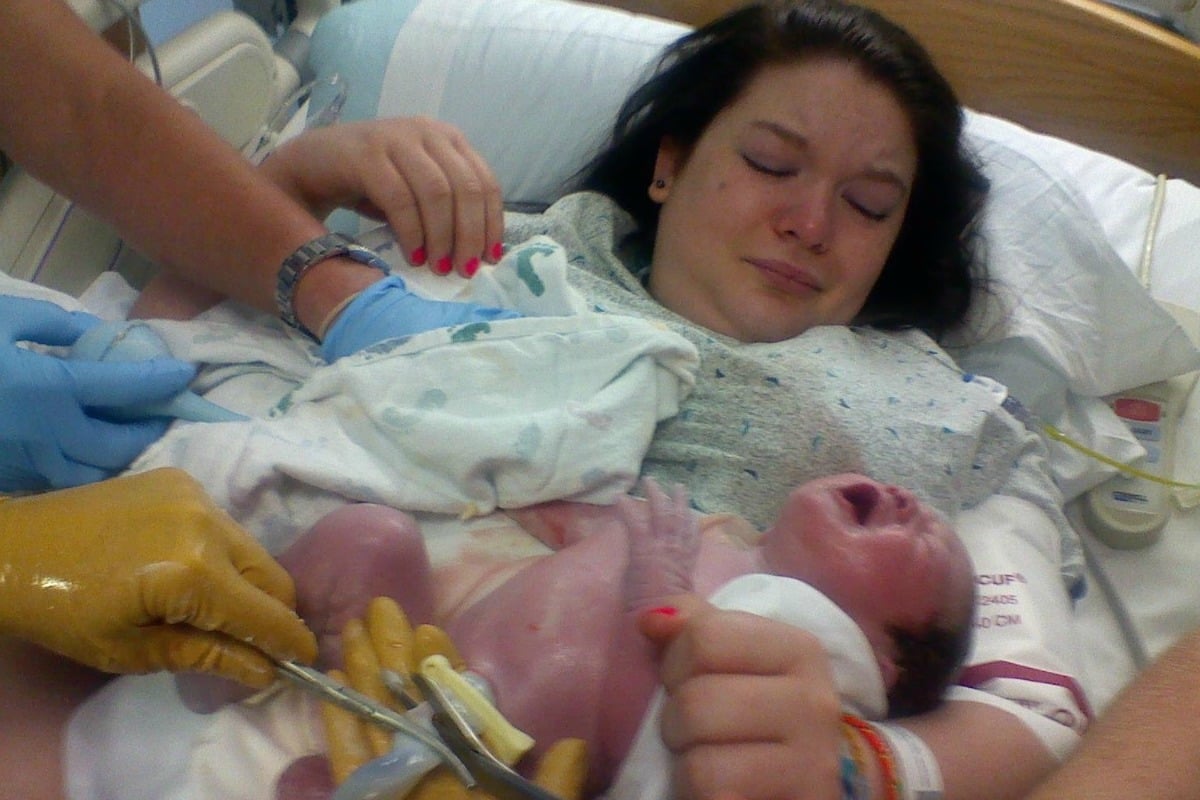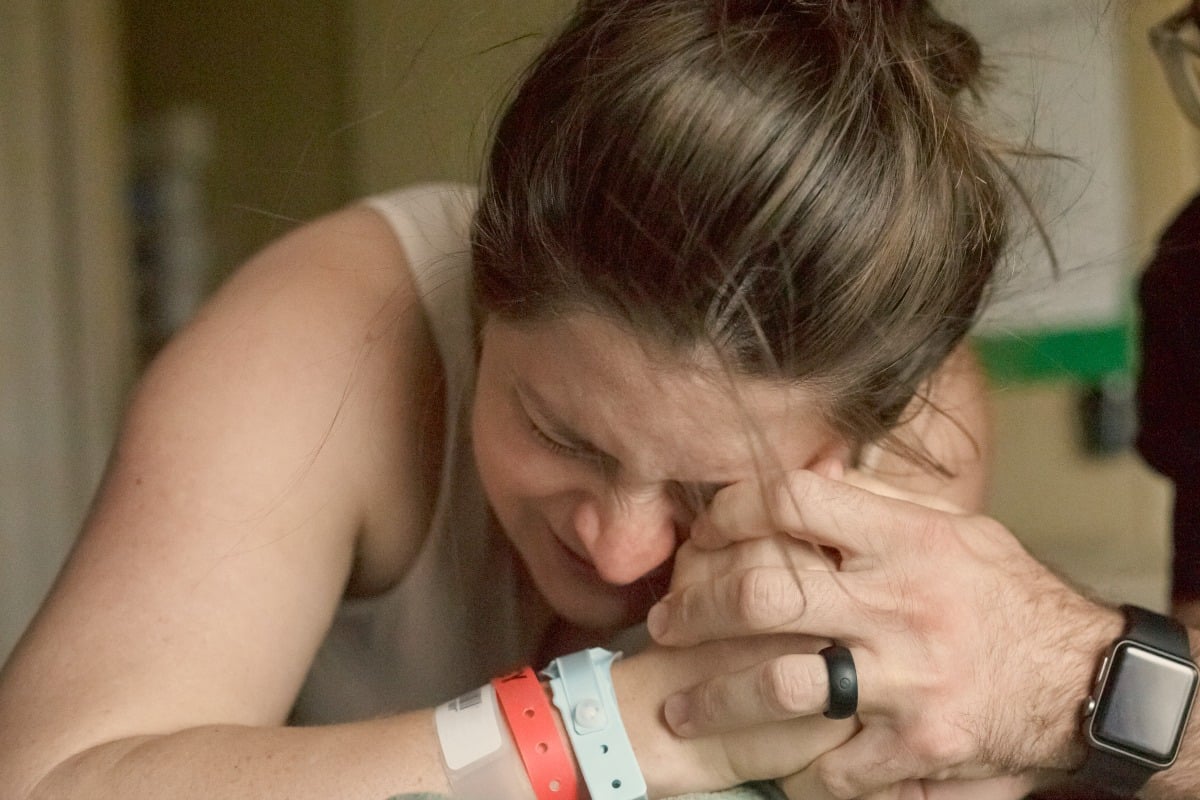
‘Shut up, close your mouth and push: there is only one voice in this room, and it is mine’, a doctor told a mother in Illinois in 2008, and in 2013, his words were echoed in a California birth room when a young woman named Kimberly Turbin gave birth to her first child. Like many twenty-first century labours, a home movie was made by a family member. A two-time rape survivor, Kimberly had urged her care providers to treat her gently and to explain to her every detail of what was happening. As her baby began to crown, her doctor, who had been sitting on a stool between her legs, announced he was going to perform an episiotomy (a cut to enlarge the vaginal opening). Pleading with him that she wanted more time to push her baby out naturally, Kimberly repeatedly said no. The situation in the birth room became more heated as both the doctor, the nurse, and Kimberly’s own mother all urged her to comply.
On the movie, which has since been viewed over half a million times, Kimberly can be heard begging, ‘No! Why? Why can’t we try?’, as the doctor’s voice becomes more aggressive, telling her, ‘Listen: I am the expert here’, and mocking her suggestion that she can do it herself, telling her, ‘You can go home and do it. You go to Kentucky.’ Just to clarify, Kimberly was not from Kentucky – he meant it as a slur and an implication of ‘backwardness’.
The doctor then proceeds to perform the episiotomy with twelve, audible cuts to her perineum.
It’s harrowing viewing. Perhaps more harrowing is the thought that Kimberly is very much not alone: a survey in 2013 by Childbirth Connection found that 6 out of 10 US episiotomies were performed without consent. What makes Kimberly’s case unusual is not that her body was violated in the name of expertise and safety, but that a) she had this violation entirely captured on camera and that b) she was determined to fight back. With the help of advocacy organisation Improving Birth, Kimberly went in search of a lawyer to take her case. It’s notable that this in itself took 18 months. ‘It took us a year and a half to find a lawyer, in spite of clear, video evidence of blatant disregard and abuse’, Dawn Thompson of Improving Birth explained. ‘This should be really concerning for a lot of people! Women are coming to us and talking about coercion, manipulation, abuse – every single day, and some of it is just being accepted because it’s just considered par for the course of giving birth in our current maternity care system.’



Top Comments
Not only was I cut without consent, the stitching up afterwards was used as a teaching moment for a trainee without my consent. I looked down and saw a woman instructing a young man on how to do stitches. I was young, so didn't say a thing. I should have blasted them.
I had a similar experience. Definitely no one asked 23 year old me if they may cut my vagina. I was in AGONY after the birth, barely able to shift myself from side to side once the epidural wore off.
3 days post birth I was still applying ice blocks down below when a nurse told me they weren't necessary(so long after the birth).
I put up with agony for 6 weeks when I saw my GP for the follow up. She took one look, pouted at the horror of what I must have gone through and proceeded to tell me she would have to squeeze the pus from the incision as it was infected.
I had no idea what an episiotomy was let alone what post birth should feel like, pain level wise. Doctors and midwives should facilitate care but also educate their patients.
I could not find an attorney when my son was circumsized against my written and verbal demand that he not be.
Does that mean that the child’s father requested a circumcision? And was the lawyer to take a complaint to the hospital or the father?